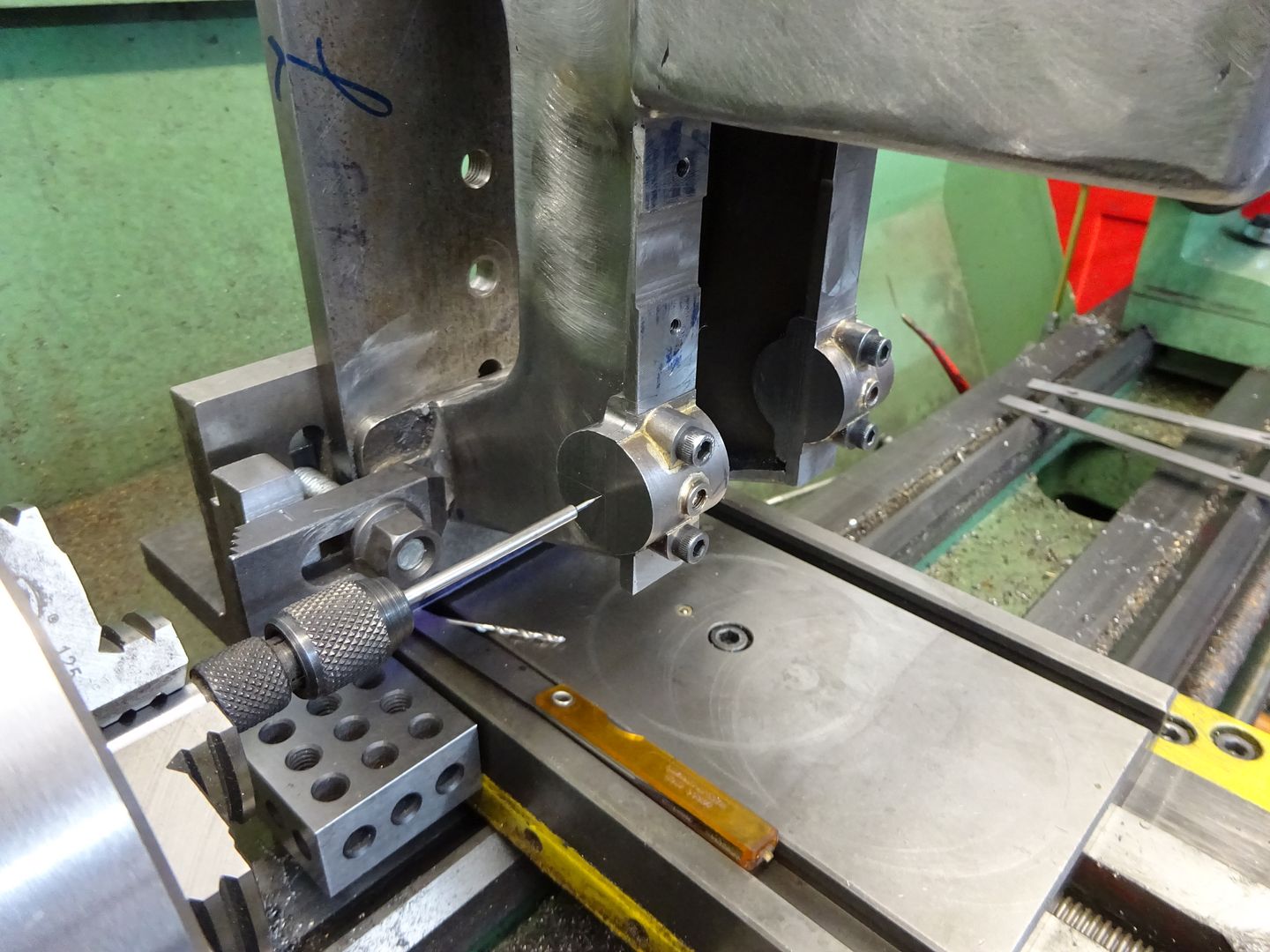.
Made the crank webs by milling 2 pieces of steel loctited together to the right size.

Then 'spotted off' for the crank throw amount. I like to make webs as a pair if possible to ensure they are both a matched pair.

Over to the 4 jaw in the lathe and centered them up. – I know I could have done this in the mill with a boring head but TBH I am far more comfortable doing lathe work than milling work for some reason. 

Next onto the main bearings. These are for some reason one piece and not the normal 2 piece ones that you would expect on an engine this size.??
Bored out to be a nice snug but slipping fit on the 20mm shaft.

And cut a 20mm groove into them.
By the time I have squared the bearing mounting blocks up on the inside of the bed casting there will be less than 20mm for them to sit into so I will have to devise a plan to build up about 1mm or so on the outside of the bearing pedistal blocks. – I could of course have made the recess a little narrower but I did not want to lose any bearing size.
I have read another build log that the builder also had discrepancies in the this area from what was specified on the drawing to what was possible with the casting. The castings for the Stuart No.4 I made were also shy of metal in a couple of areas.

Parted off

General arrangement with the 2nd one made and the webs separated and prettied up a bit. (shaft parts not yet finally joined)

Nick
Edited By Nick_G on 28/02/2017 19:20:08
Henry Brown.
































